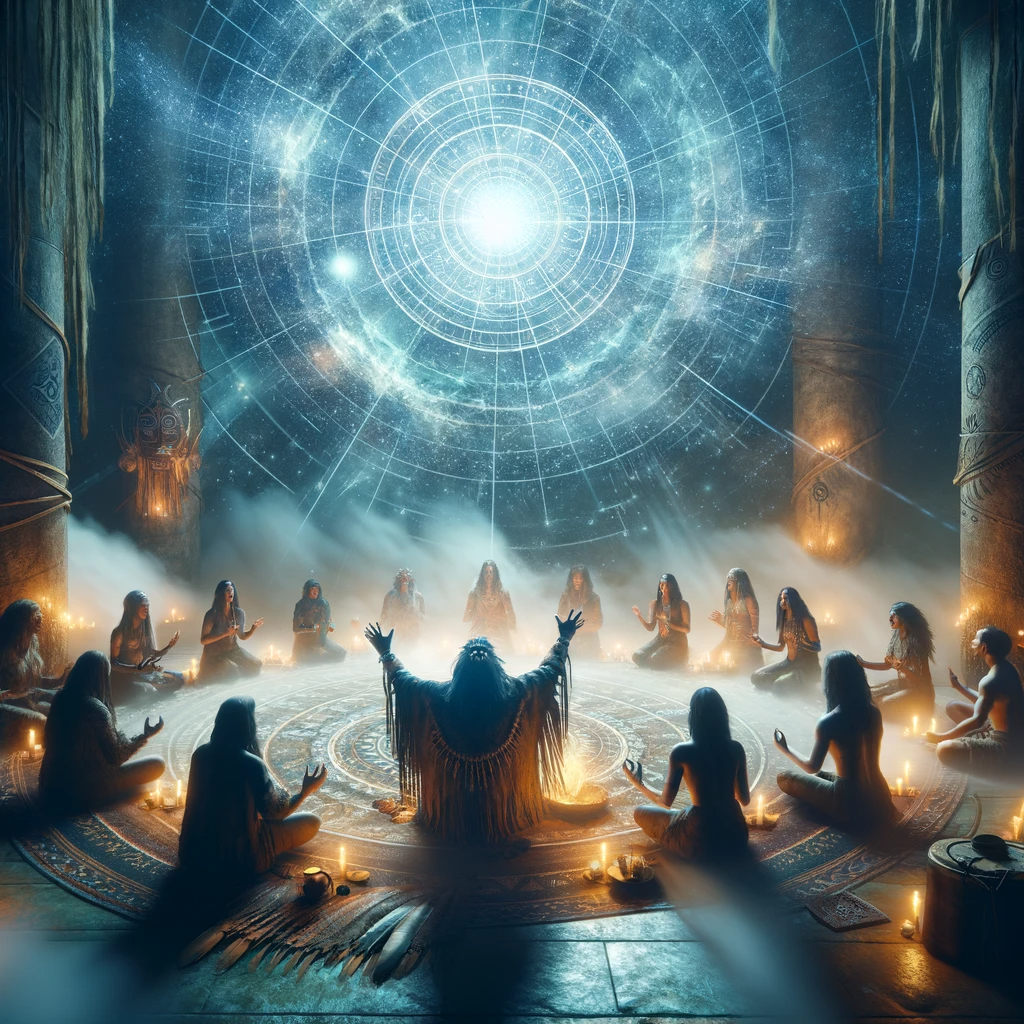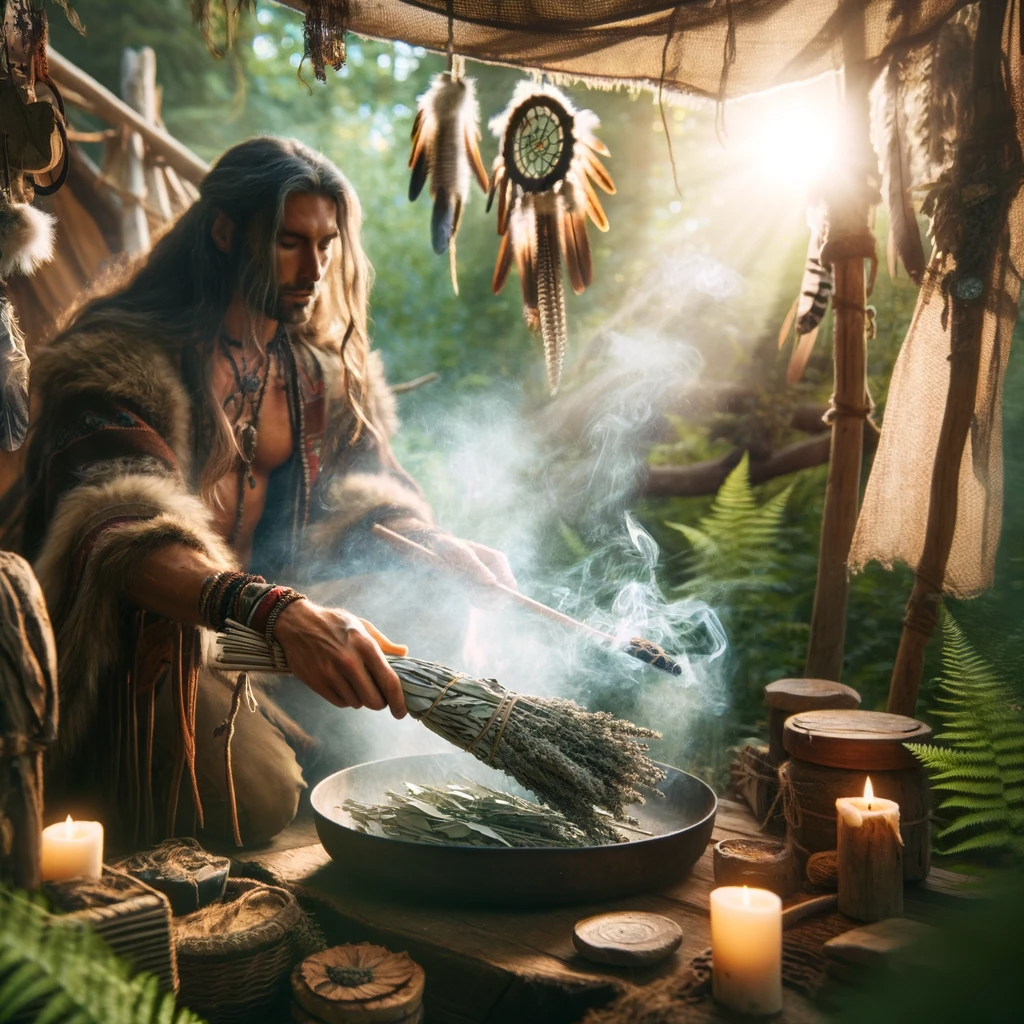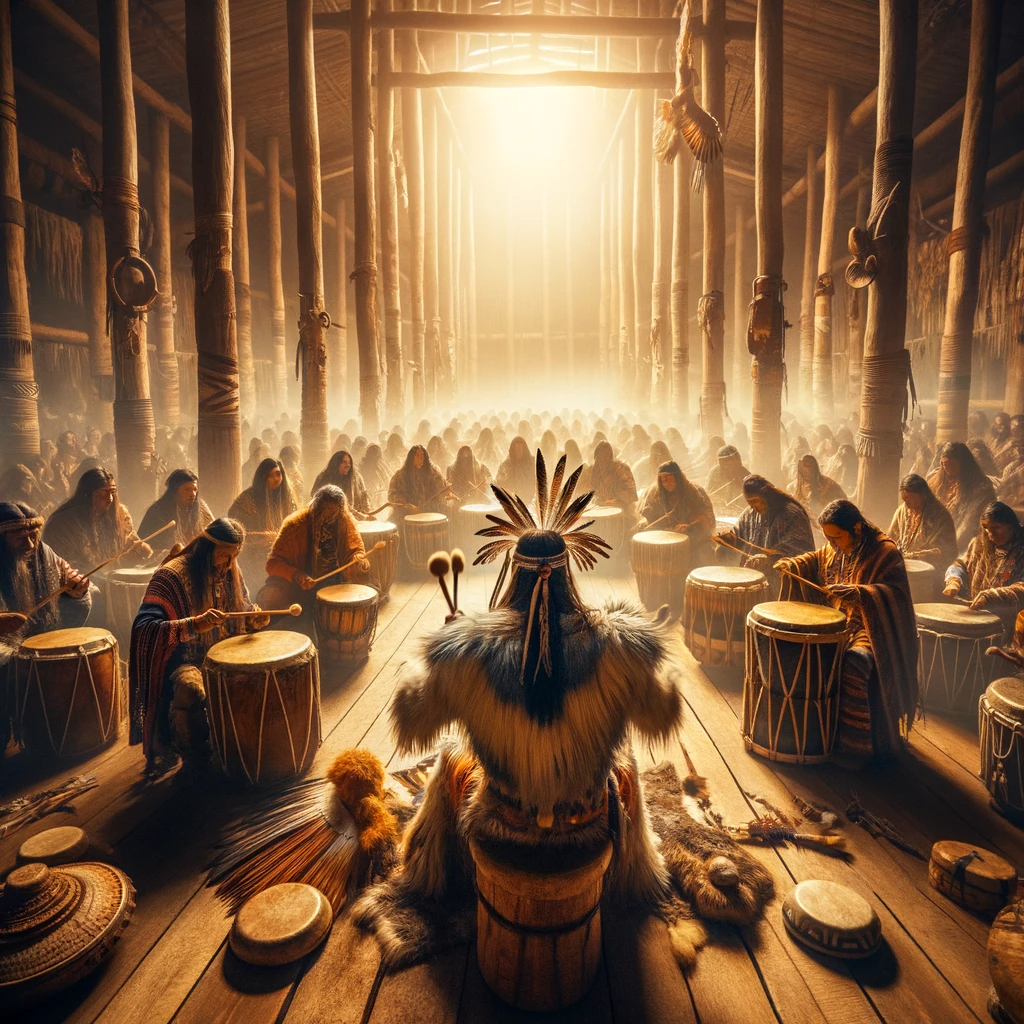Shamanic Rituals and Ceremonies: Insights into Ancient Practices

Shamanism refers to a range of traditional beliefs and practices that involve reaching altered states of consciousness in order to interact with the spirit world. Shamans act as intermediaries between the human world and the spirit realm.
Shamans engage in various rituals and ceremonies to facilitate healing, guidance, and spiritual growth. These rituals have been performed for thousands of years by indigenous cultures around the world. Examining shamanic rituals provides insight into ancient spiritual practices and their purposes.

Common Shamanic Rituals and Tools
Shamans use a variety of tools and techniques to enter trance states. Some of the most common rituals include:
Smudging
Smudging involves burning sacred herbs and resins, such as white sage, sweetgrass, cedar, and copal. The smoke is fanned around a person or space using feathers or hands. Smudging is thought to clear negative energy and attract positive vibes.
Drumming and Rattling
The repetitive, rhythmic sounds of drumming and shaking rattles helps shamans reach altered states of consciousness. Particular drumming patterns may be used to call specific spirits.
Singing and Chanting
Songs, chants, and mantras are used to invoke spirits or guide the shaman’s journey. The vocalizations represent spirit languages and expressions of energy.
Dance
Dancing helps shamans loosen up physically and energetically to connect with spirits. The movements may mimic animals or energetic states.
Costumes and Masks
Ceremonial clothing, masks, and ritual tools link the shaman to the spirit world. The costumes and masks depict the shaman’s spiritual helpers and identities.
Vision Quests
Vision quests involve going on a spiritual journey alone in nature to seek visions through fasting, meditation, and sensory deprivation. Quests can last hours to days.
Sacred Spaces
Shamans create temporary sacred spaces and altars to hold ceremonies. These spaces anchor energies and provide portals for spirit contact.
Shamanic Healing Rituals
A major role of shamans is to facilitate healing of physical, emotional, and spiritual issues. Common healing rituals include:
Soul Retrieval
Soul retrieval aims to call back lost soul fragments that depart after trauma. The shaman journeys to find the soul parts and reunite them with the patient.
Power Animal Retrieval
Power animals are spirit guides that provide wisdom and strength. Shamans enter trance to discover a patient’s power animal and guide it back as an ally.
Extraction Healing
The shaman enters an altered state to see, extract, and purge energetic or spiritual blockages causing patient illness. This is often done by sucking out toxins.
Sand Paintings
Some shamans create intricate sand paintings representing energies affecting a person. The sand painting absorbs the energies during the ritual.
Plant Spirit Healing
The shaman calls on the healing properties of plant spirits through ceremonies. Plants may be smoked, consumed, or brushed over the patient.
Water Blessings and Purifications
Water can absorb toxic energies. Shamans may sprinkle blessed water, guide patients to purifying dips in water, or have patients drink specially prepared water.
Chant and Dance
Healing chants and dances performed by the shaman or patient invoke therapeutic spirit energies. The combination shifts energies to restore wellness.

Rites of Passage Rituals
Shamans conduct important rites of passage rituals to mark major life changes, including:
Coming of Age Rituals
Ceremonies to celebrate a child becoming an adult often involve challenges to display courage and readiness for adulthood. Girls’ rites may include separating from the mother.
Wedding Ceremonies
Shamanic wedding rituals focus on joining two individuals energetically. The rituals bless the new union and family that will be created.
Funerary Rites
Funerary practices guide the deceased to the afterlife and sever ties between the living and dead. Rituals help ensure the deceased does not remain attached to this world.
Initiation into Shamanhood
When apprentices become full shamans they undergo rigorous initiations involving tests of endurance, journeying, and demonstrating mastery of shamanic skills.
World Traditions
Shamanic practices have existed in diverse regions globally. Here are some noteworthy shamanic traditions:
Siberian Shamanism
Siberian shamans work with animal spirits and perform soul retrievals. Their ritual dress includes coats representing spirit guides that transform into costumes.
Korean Mudang
Mudang shamans dedicate themselves to divine spirits who assist in healing and exorcism rituals marked by ecstatic dance.
Mongolian Shamanism
Mongolian shamans connect with ancestral spirits to solve problems. They use drumming, chanting, and sleight of hand illusions during rituals.
Tibetan Bon Shamans
Bon shamans guide the dead and perform exorcisms. Their elaborate costumes depict deities and they utilize dance, chants, and mudra gestures.
Celtic Shamanism
Celtic shamans communicated with nature spirits, practiced divination, and acted as healers. Their spirit flights are alluded to in old tales.
Andean Shamans
Andean shamans enter trance through drumming, dance, fasting, and San Pedro cactus to heal, tell fortunes, and mediate with mountain spirits.
Australian Aboriginal Shamans
Aboriginal shamans called karadji contacted dreamtime ancestor spirits for divination and healing through rituals involving singing, smoke, and crystals.

Modern Shamanism
While shamanic traditions have diminished in some regions due to colonialism and religious suppression, shamanism has seen renewed interest globally. People in developed nations have been increasingly drawn to indigenous spirituality. Some seek out shamanic training or sessions to experience ritual healing.
However, there are debates over whether people from outside indigenous cultures should emulate rituals viewed as sacred by living cultures. Appropriation versus respectful sharing of original practices remains controversial.
Nonetheless, many believe that the core principles of shamanism have universal worth. More people have been inspired to integrate shamanic philosophy of working with compassionate spirits for healing. Methods adapted to modern lifestyles, like contemporary drumming ceremonies, have also evolved. The renewed interest signifies that ancient rituals still hold meaning for people today.
Frequently Asked Questions About Shamanic Rituals
What are some common tools shamans use for rituals?
Drums, rattles, feathers, crystals, masks, costumes, and plants like tobacco are some of the common ritual tools shamans use. Sacred ceremonial tools can help shamans commune with spirits and represent spiritual identities.
What types of spirits do shamans interact with?
Shamans interact with ancestral spirits, animal guides, nature spirits, and compassionate spirit beings. They may also contend with negative entities causing harm that need intervention. Spirits provide shamans with wisdom, power, and support.
How do shamanic ceremonies help people?
Rituals allow participants and shamans to move into altered states of consciousness where healing, guidance, and spiritual connections occur. Shamans also call in spiritual forces to directly promote healing, transformation and empowerment.
How do shamans enter trance states in rituals?
Trance states can be induced through drumming, rattling, dancing, breathing exercises, fasting, vision quests, and consuming psychoactive plants. The trance state allows the shaman’s consciousness to journey to spirit realms.
Can someone become a shaman or benefit from shamanism today?
Some indigenous cultures still practice traditional apprenticeship. People drawn to shamanism can learn core techniques like journeying from books or modern classes. However, respectful understanding of indigenous traditions is vital. Many find spiritual insight in adapted modern shamanic practices.
